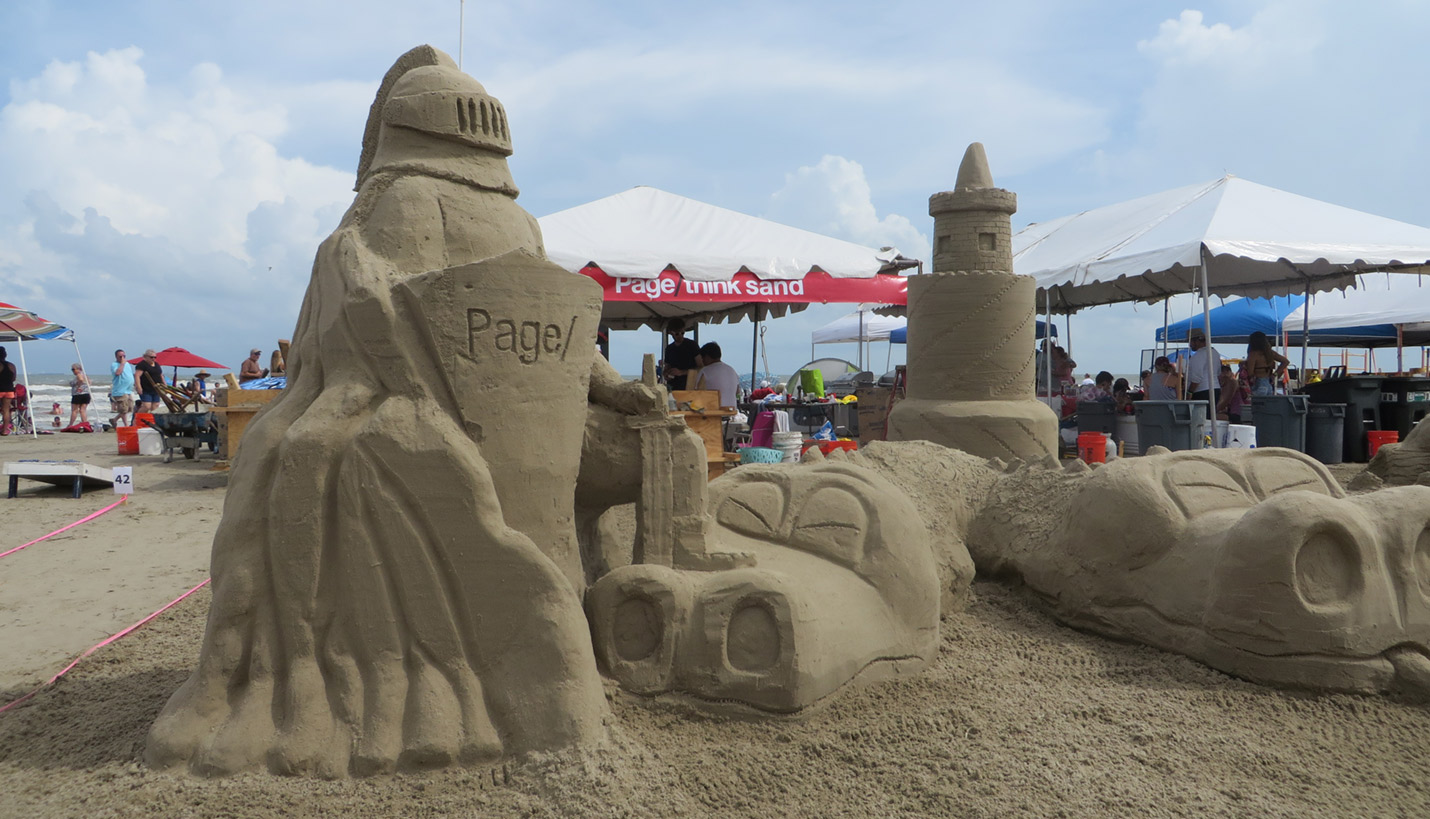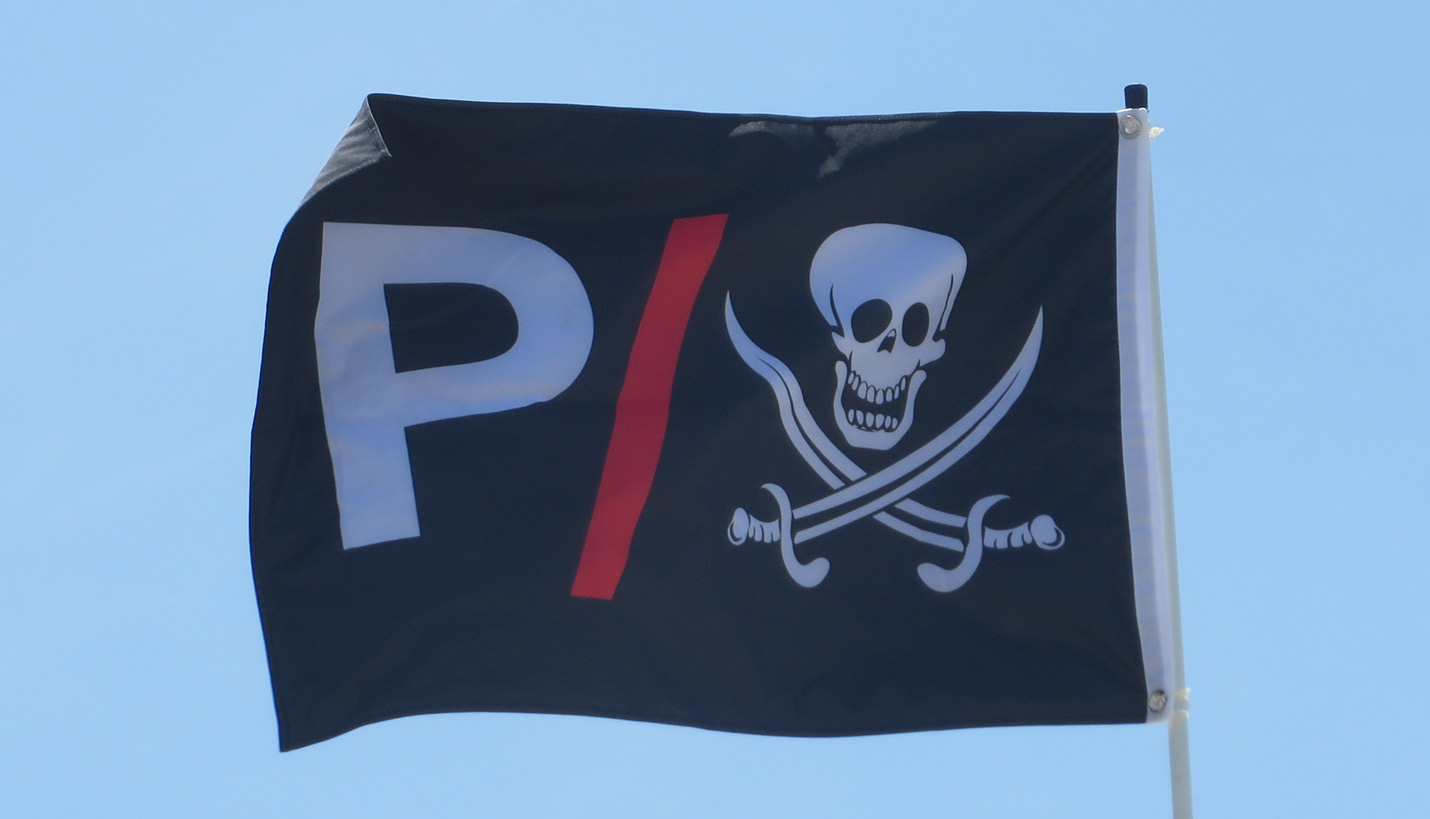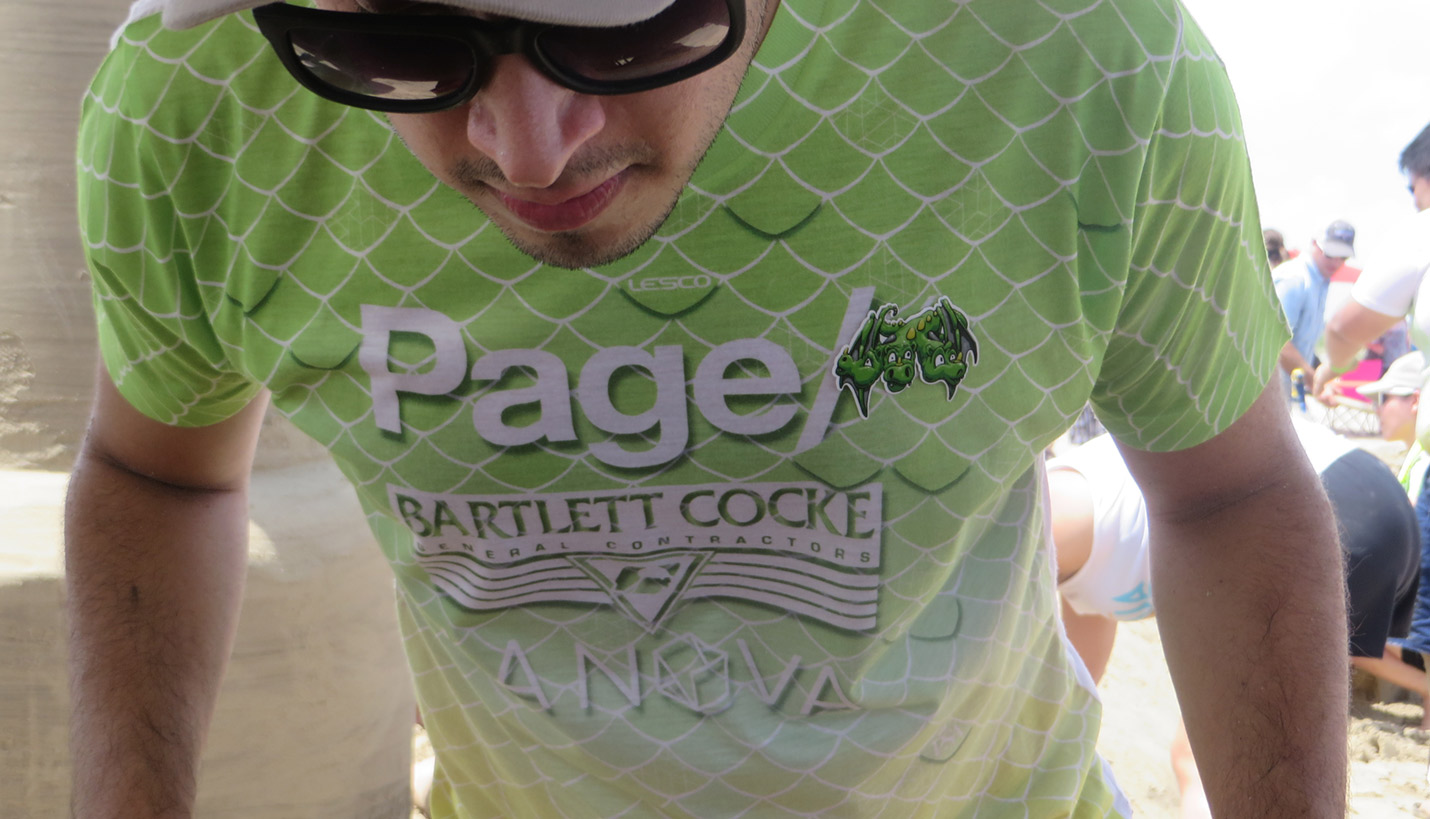Featured on TV: 2016 AIA Houston Sandcastle Design Competition
The 30th Annual AIA Houston Sandcastle Competition and fundraiser was featured on ABC News, and Page is proud to have won fifth place overall in a field of nearly 50 teams! The competition was stiff, with over 40 teams of architects, engineers and contractors from the greater metropolitan region. However, we think one of our partners in sand, La Nova Tile, said it best of our three-headed dragon and knight design (and logo): "We s/layed it."

Planning begins months ahead of the event, with teams brainstorming and developing their designs. They select from predetermined themes, then sketch their designs and think through the logistics. They calculate how many cubic feet of sand they’ll need, and how to build the forms. They think through how many people will be needed, not only for the forming and carving, but also who will bring the food and beverages, and who will design the team T-shirt.
Most teams have contractor partners who typically build forms prior to the event and haul wheelbarrows, shovels, ladders, and a variety of tools to the site. It is a great opportunity for architects and contractors to work together for fun, designing and then shoveling sand shoulder-to-shoulder. All of the materials are delivered to the site in the early morning, and the vehicles must be cleared from the beach before the tens of thousands of spectators begin arriving. Nearly 100 people were involved in some way with the Page / Bartlett Cocke / La Nova Tile team effort.

At 10:00am, with a countdown over the PA system, a flurry of activity can be seen up and down the beach as nearly fifty teams begin shoveling sand and hauling water from the surf. To be environmentally responsible, gasoline generators are not allowed, so teams resort to simple manual bucket brigades or sometimes human-powered pumps. Most teams use plywood forms, and filling these can take from one to three hours depending on the height, volume of sand to be moved, and the size of the team. Getting the right mix of sand and water is essential, especially for the tall pieces and for those with arches and other details. Every year there are stories of teams who tried to build something tall, only to have it collapse when they removed the bottom form.

Once the heavy lifting is out of the way—and people get a chance to catch their breath--the carvers start working their way down from the tops of each form, using shovels and simple hand tools like trowels, knives, spoons, melon ballers, homemade tools from bent pieces of metal, and even chopsticks and straws. Some teams make templates ahead of time for lettering or for elements that get repeated in the design. The carvers also work at a furious pace, because they know time is limited and most teams choose ambitious designs that will require meticulous time management to complete. While the carvers are focused on their pieces, other team members are bringing them drinks, sunscreen, shoveling unneeded sand, and keeping the progress moving.


This continues for five hours, with throngs of passersby asking questions and taking pictures. At 3:00, when time is up, each plot contains only sand and water. No rebar, no additives, not even food coloring nor decorations such as feathers, flags or seaweed. Then the judging begins, with a team of judges making their way down the beach. The public also gets to vote for their favorite. By about 5:00, the winners are announced in each category.

In previous years, Page has won the Golden Bucket (first place) twice, Silver Shovel (second place), Bronze Shovel (third place), Best Team T-Shirt, and Best in its selected category many times. We are proud of this fifth place win and of the team that made it happen.

Congratulations to all the winners! To see the ABC News story of this fundraiser, click here.
08/22/2016
People
Related Posts
- AIA Sandcastle Competition 2015
- Page Honored with Multiple AIA Houston 2016 Design Awards
- Page Principal Receives Presidential Citation from AIA Houston President
- 3/3: Three Page Women on Women in Architecture
- Seeing The World Through An Architect's Eyes
- Protecting San Francisco’s Trees
- Empowering Your Career Through Storytelling












